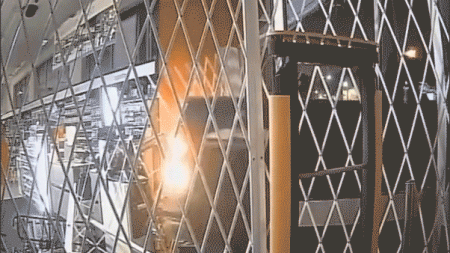Afghanistan Earthquake: Relief Efforts Hampered as Rescuers Battle to Reach Remote Villages
Devastation in Isolation: The Struggle to Access Quake-Affected Regions
In the rugged mountainous terrain of eastern Afghanistan, a desperate race against time is unfolding as rescue teams battle treacherous conditions to reach communities devastated by a powerful magnitude 6.0 earthquake. The disaster, which struck in the early hours when most residents were asleep, has left an unknown number of people trapped beneath collapsed structures in villages so remote they remain virtually cut off from the outside world.
“The situation is incredibly challenging,” explains Dr. Najibullah Kamal, a coordinator with the Afghan Disaster Management Authority. “We’re dealing with narrow mountain passes that have been blocked by landslides, washed-out roads, and in some cases, entire villages that are only accessible by foot or helicopter.” The eastern provinces, particularly in regions bordering Pakistan, feature some of Afghanistan’s most inaccessible terrain—a beautiful but formidable landscape of steep valleys and high peaks that has now become a deadly obstacle course for those attempting to bring aid.
The earthquake’s epicenter was located approximately 30 miles southeast of Jalalabad, in an area where infrastructure was already fragile after decades of conflict and neglect. Initial reports suggest hundreds of simple mud-brick homes have collapsed entirely, with thousands more damaged to varying degrees. Mohammad Qasim, 42, a resident of one affected village who managed to reach a district center, described the terrifying moment when the quake struck: “It was like the mountains themselves were moving. The sound woke us before the shaking—a deep rumble that grew until our walls began to crack. We grabbed our children and ran outside just as our home of twenty years crumbled behind us.”
International Response Mobilizes as Local Resources Stretched Thin
The international humanitarian community has rapidly mobilized in response to the disaster, with the United Nations Office for the Coordination of Humanitarian Affairs (OCHA) establishing an emergency operations center in Kabul. Various non-governmental organizations with experience operating in Afghanistan, including Médecins Sans Frontières, the International Committee of the Red Cross, and several local Afghan aid groups, have dispatched assessment teams and emergency supplies to staging areas near affected regions.
“This earthquake has struck at a particularly vulnerable moment for Afghanistan,” notes Emma Richardson, a senior humanitarian affairs officer with OCHA. “The country was already facing a complex humanitarian emergency with approximately 28 million people in need of assistance before this disaster. The earthquake compounds existing challenges related to food insecurity, limited healthcare, and economic collapse.” The World Food Programme has begun redirecting food supplies to the area, while the World Health Organization is coordinating the deployment of emergency medical teams capable of treating traumatic injuries.
Despite these efforts, significant political complications remain. Following the Taliban’s return to power in August 2021, many countries suspended direct government-to-government assistance, instead channeling aid through international organizations and NGOs. This has created additional layers of complexity in coordinating an effective response. “The focus right now is purely humanitarian,” emphasizes Dr. Samira Hamidi, an Afghan disaster response expert. “When natural disasters strike, we must temporarily set aside political considerations and focus on saving lives. The people affected by this earthquake—many of them children, women, and the elderly—need immediate help regardless of who controls the government.”
Technology and Traditional Methods Combine in Search and Rescue Operations
As daylight revealed the extent of the destruction, rescue operations have employed both advanced technology and time-tested methods to locate survivors. Thermal imaging drones deployed by international search and rescue teams are scanning debris fields for heat signatures that might indicate trapped survivors, while specialized listening devices are being used to detect sounds beneath collapsed structures.
In more remote locations, however, these technologies are unavailable, and rescue efforts rely on the determined work of local residents using shovels, pickaxes, and their bare hands to clear rubble. “In the first 72 hours after an earthquake, every minute counts,” explains Farid Hotak, a veteran of multiple earthquake response operations with the Afghan Red Crescent Society. “We call this the ‘golden period’ when the chance of finding survivors is highest. But as hours pass, these chances diminish, especially given the cold overnight temperatures in these mountain regions.”
Communication networks have been severely compromised, with cell towers damaged and power outages affecting large areas. This information vacuum has complicated efforts to prioritize response locations and assess the full scale of the disaster. In some cases, villagers have walked for hours to reach functioning phones or government outposts to report casualties and damage in their communities. Satellite phones provided by aid organizations have become crucial lifelines, allowing coordination between remote teams and central command posts established in provincial capitals.
Historical Vulnerability and the Path to Recovery
Eastern Afghanistan’s location along active fault lines has made it historically vulnerable to seismic events. The region sits where the Indian and Eurasian tectonic plates meet, creating conditions for frequent and sometimes catastrophic earthquakes. Just last year, a magnitude 5.9 earthquake in the southeastern provinces killed over 1,000 people and injured thousands more. In 2015, a 7.5 magnitude quake that struck the Afghanistan-Pakistan border region claimed hundreds of lives.
“What makes this current situation particularly concerning is that it has struck communities already living in extreme poverty with minimal resources to withstand or recover from such shocks,” explains Dr. Farida Ahmadi, a geologist at Kabul University who specializes in seismic activity in the region. “Many homes in these areas are constructed without consideration for earthquake resistance—typically made of mud bricks with heavy roof structures that become deadly when walls collapse.” Traditional building methods, while adapted to the harsh climate, often prove catastrophically vulnerable to seismic activity.
The road to recovery will be long and challenging. Beyond the immediate rescue and relief efforts, affected communities will need sustained support for rebuilding homes, restoring livelihoods, and addressing the psychological trauma experienced by survivors. International development experts emphasize that reconstruction efforts must incorporate earthquake-resistant building techniques appropriate for the local context and resources. “We’ve learned from previous disasters that simply rebuilding as before guarantees future tragedies,” notes Abdullah Fahim, an engineer with the Afghan Society of Earthquake Technology. “This is an opportunity to build back safer, but it requires long-term commitment and funding that often disappears once the immediate crisis fades from headlines.”
The Human Cost: Stories of Loss and Resilience
As rescue operations continue, personal stories of both tragedy and remarkable survival have emerged from the affected areas. In one village, rescuers pulled a 4-year-old girl alive from the rubble nearly 30 hours after the earthquake struck. She had been protected by the body of her grandfather, who did not survive. In another community, an entire extended family of 14 people was lost when their multi-generational home collapsed during a family gathering.
The earthquake has also disrupted essential services beyond housing. Several schools in the region have been damaged or destroyed, interrupting education for thousands of children. Local clinics and hospitals—already under-resourced—are overwhelmed with injured patients, many requiring specialized trauma care unavailable in rural areas. Aid organizations are establishing field hospitals equipped with surgical capabilities, but the logistics of transporting severely injured victims to these facilities remains challenging.
For many survivors, the earthquake represents yet another chapter in a lifetime of hardship. “We have endured war, drought, floods, and now this earthquake,” reflects Bibi Hawa, a 67-year-old woman who lost her home but survived along with her grandchildren. “Each time we rebuild from nothing. This is the Afghan way—to endure, to persist.” This resilience, born of necessity through decades of adversity, will be crucial in the coming months as communities begin the painstaking process of recovery.
As international attention inevitably shifts to other global crises, humanitarian organizations stress the importance of sustained engagement with Afghanistan’s earthquake victims. “The cameras may leave, but the need remains,” reminds Dr. Kamal. “Recovery from disasters of this magnitude takes years, not weeks.” For now, as rescue workers continue their grueling efforts to reach isolated communities, the full extent of the devastation remains unknown—but the human spirit of both survivors and those coming to their aid stands as a powerful reminder of our shared humanity in the face of nature’s formidable forces.











